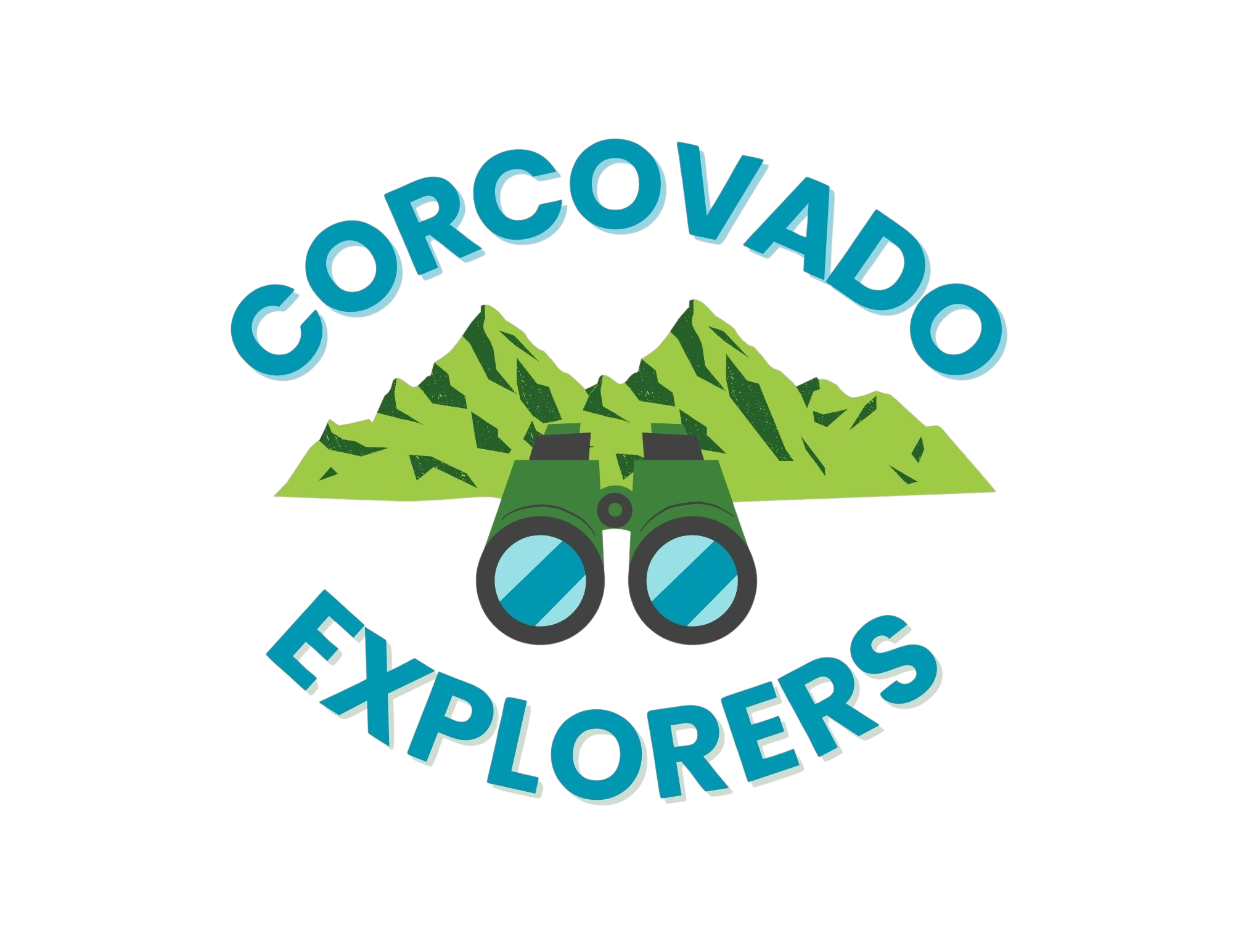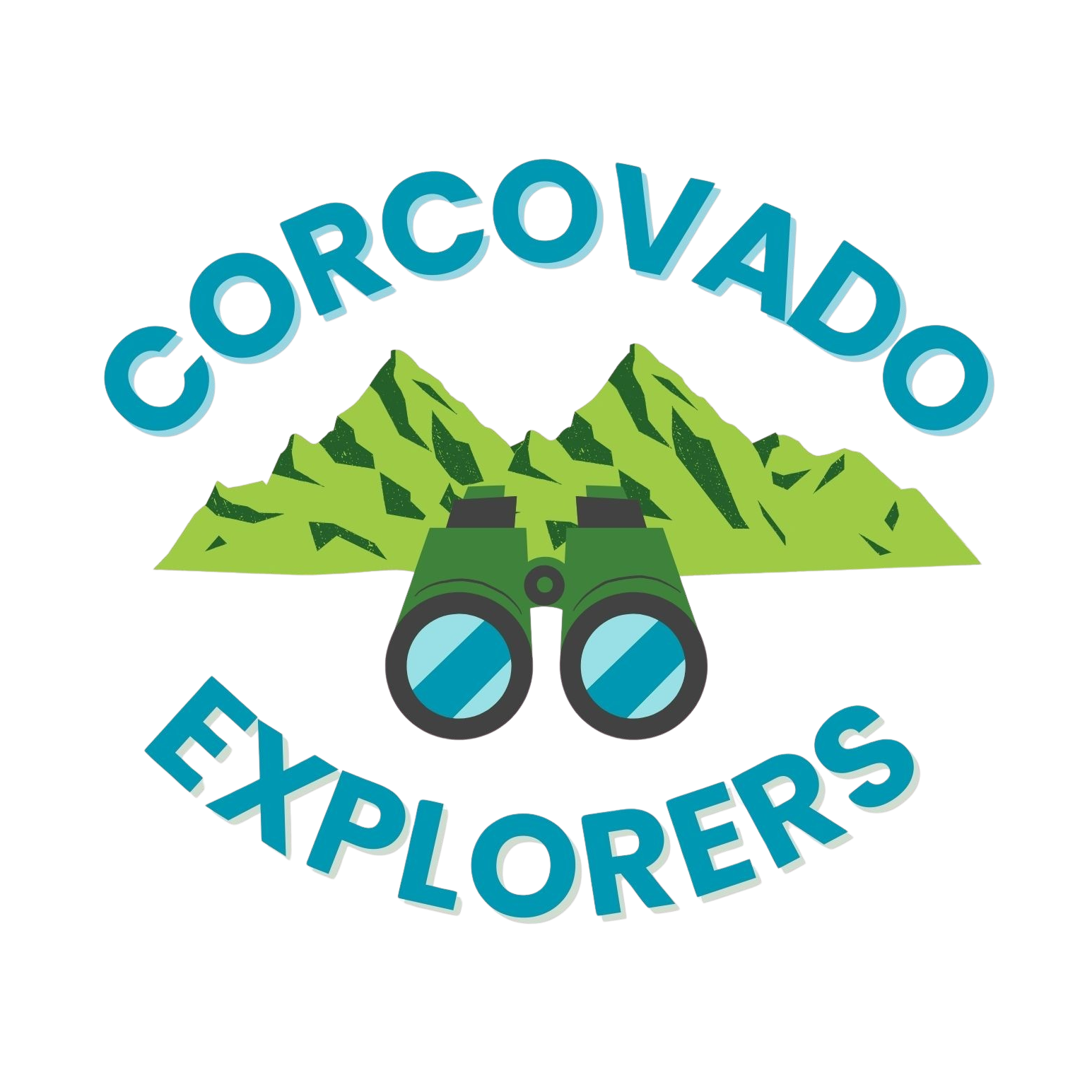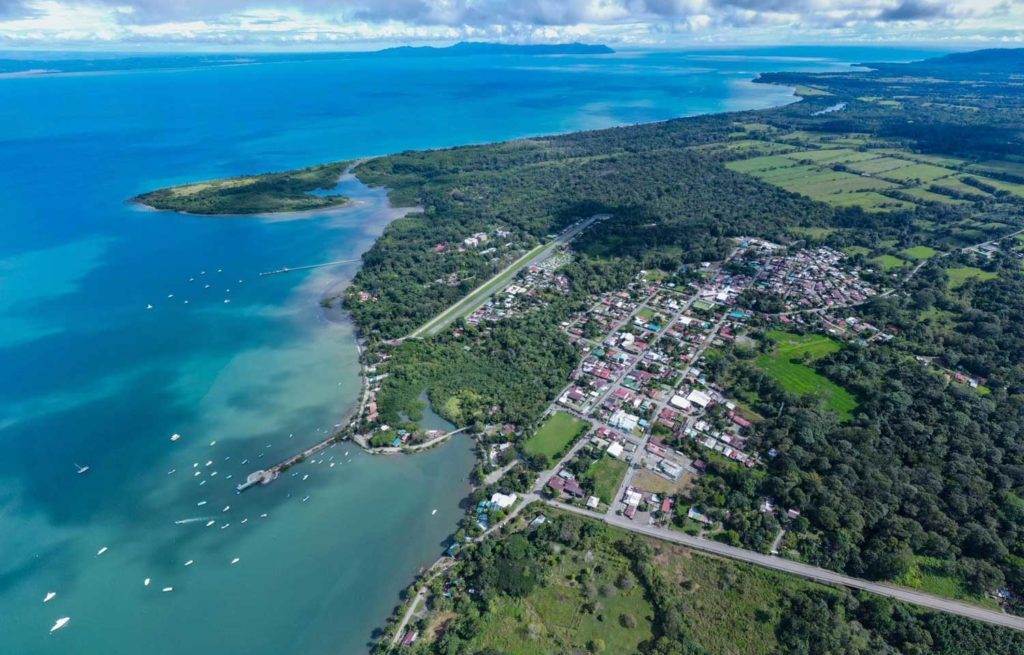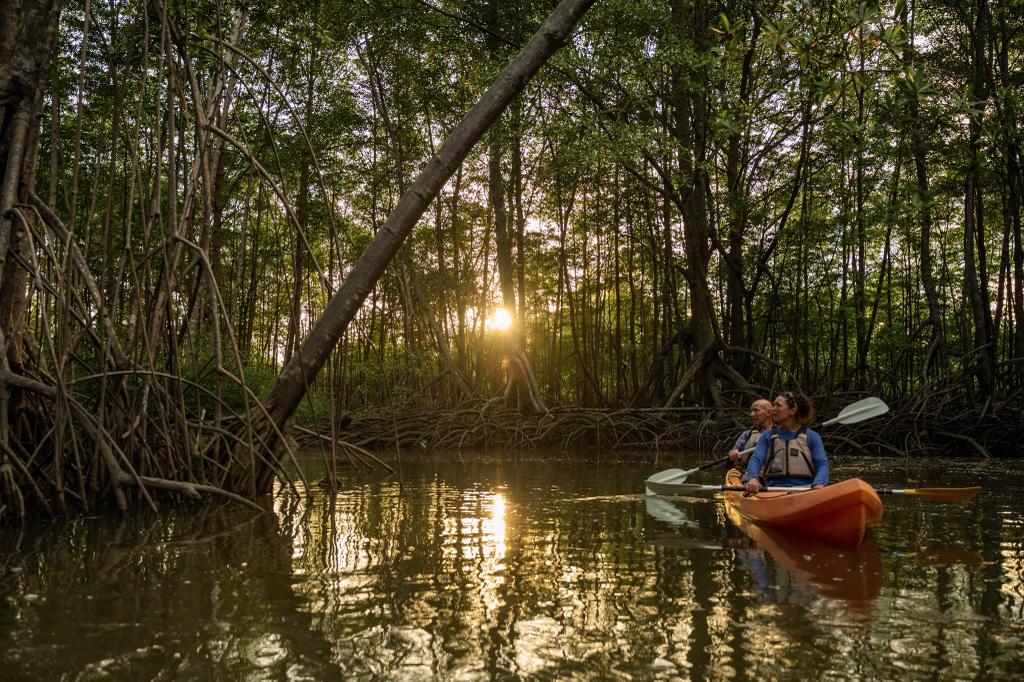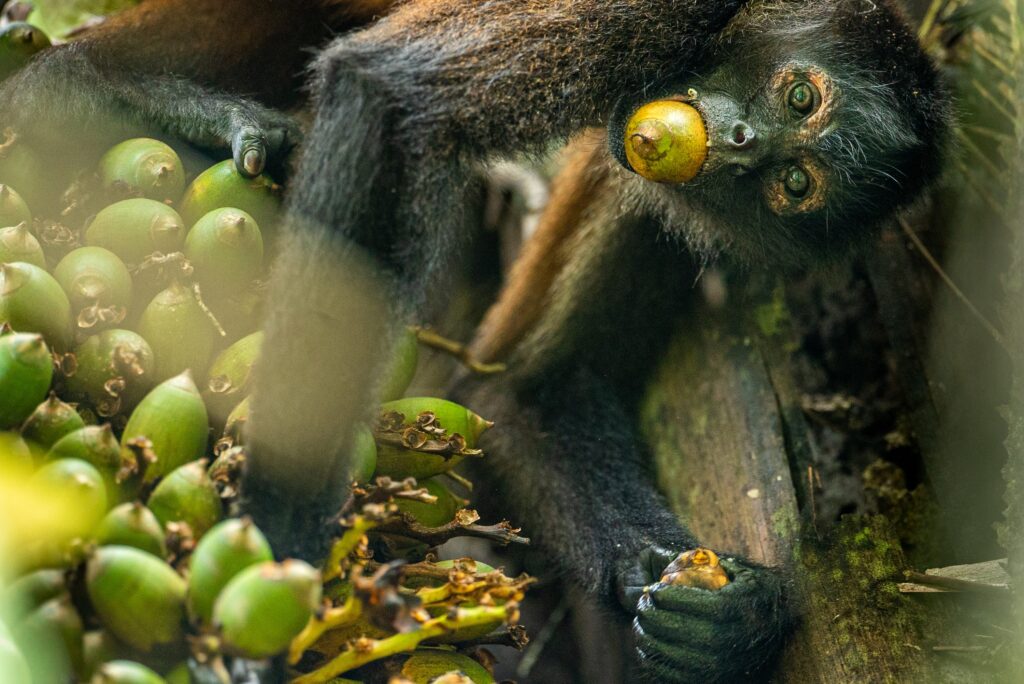Introducing You To The Osa Peninsula!
Welcome, Explorers! My name is Alberto, but you can call me Al, and this is the new Corcovado Explorers blog.
We created this space to provide you with more information about tourism in Costa Rica, especially in the South Pacific and the Osa Peninsula, the place we call home.
Today, we’re going to introduce you to our most precious treasure, the Osa Peninsula, and I say “our” because we share it with the whole world, and that includes you.
The Osa Peninsula is located in the South Pacific of the happiest country in the world, Costa Rica, and has a high concentration of biodiversity. It’s estimated to hold at least 2.5% of the world’s biodiversity, making its conservation essential for the future of life on our planet.
We’ll start by planting a seed of doubt: Have you ever experienced the tropical rainforest? We’ve been involved with it since we were very young, and sometimes it’s hard to grasp what this means or what’s happening around us.
STORYTIME:
When I was 13 years old, on my way back home from school on my bike, and suddenly a strange smell around me stopped me. I always heard the elders say, “it smells like a cat,” but I never thought that a particular scent would fill every space before a feline appeared. And since we’re in Costa Rica and this is the jungle, we can deduce that it wasn’t just any cat. Well, there I was, trying to detect what that smell was, and out of nowhere, a puma crossed the street. We stared at each other, and then it continued on its way. That day, I think I understood how special this place is, and I also understood that animals don’t understand government boundaries and aren’t just in Corcovado National Park.
However, if this happens here in my neighborhood, imagine the magnitude of nature in the pure heart of the rainforest.
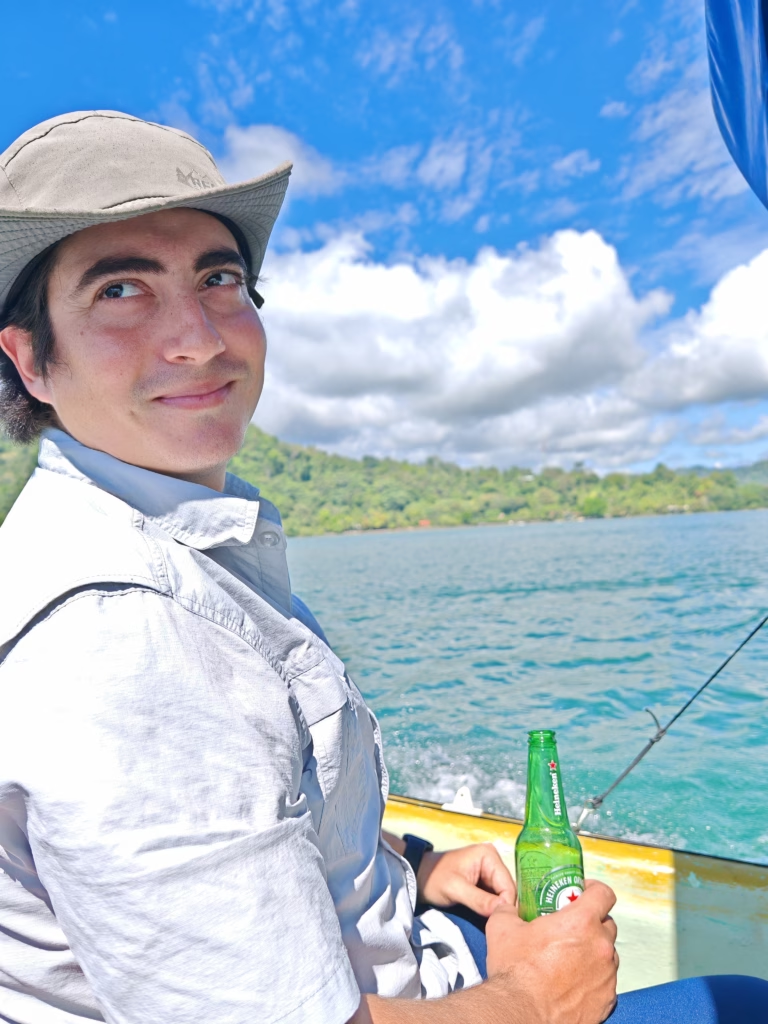
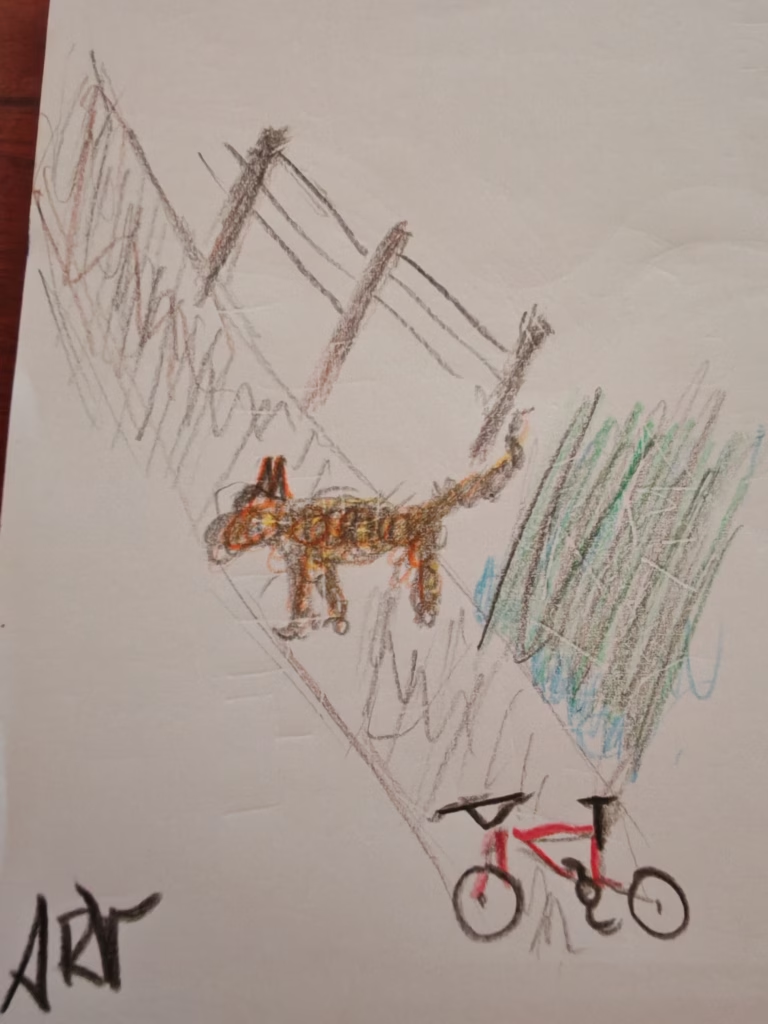
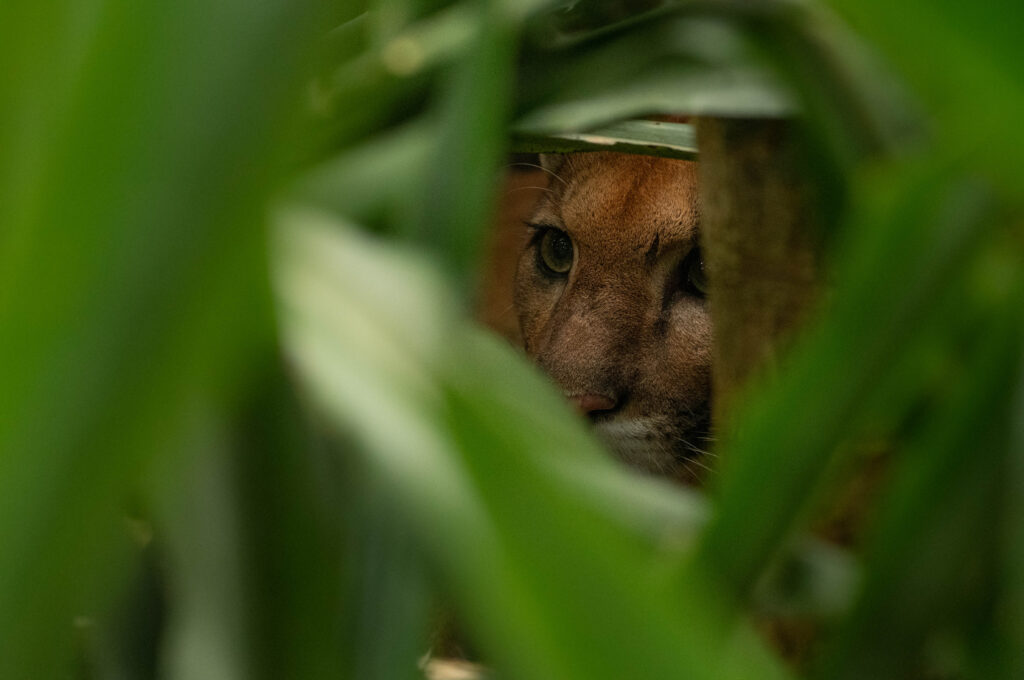
Visiting the Osa Peninsula has its tricks, but it’s nothing you can’t solve with the help of a local, and who better than me? A Gulf kid. This time, I’ll tell you a bit about the geographical locations that make up the peninsula, how to get to each of them, and the best places to visit in each of these tourist paradises.
The Osa Peninsula
This treasure of world biodiversity is located in Costa Rica, in the South Pacific, in the province of Puntarenas, and consists of three territories: Sierpe, Drake Bay, and Puerto Jiménez. As expected, each place has its specialty and endless activities to experience and explore its diversity.
Our ecosystems have a wide variety of forest types, and although the tropical rainforest is predominant, it’s not the only one in the area. This is called microclimates, and among them, we have mangrove forests, cloud forests, gallery forests, beaches, and wetlands that contribute to the exceptional diversity of the Osa Peninsula.
Here’s a tour of the main towns and tourist centers in the area:
Sierpe: Wetland and Canal Paradise
Sierpe is a district of the Osa canton, home to the largest mangrove reserve in Latin America. Its snake-shaped canals are mesmerizing from the air, but from a boat, they envelop you and allow you to feel the energy these giants hold. It’s also a land with a rich history.
How to get to Sierpe?
There are 3 ways to get to Sierpe: by bus, by car, or by plane. However, the plane doesn’t go directly to Sierpe; it goes to Palmar Sur, and from there, you need a taxi to Sierpe, or you can always wait for the next bus. Flights aren’t that frequent, but from San José, there are 2 direct buses to Sierpe from the Tracopa company.
What to do in Sierpe?
If you visit Sierpe, a visit to the Finca 6 Museum is a must. It’s an archaeological museum that’s part of the pre-Columbian stone spheres of Diquís, which were declared a UNESCO World Heritage Site.
The mangrove tours along the Sierpe River are unmissable. The biodiversity of the mangroves and their functions as ecosystems are impressive. These tours are usually very scenic and educational, definitely an experience not to be missed.
Sierpe is definitely a good start if you decide to explore the Osa Peninsula.
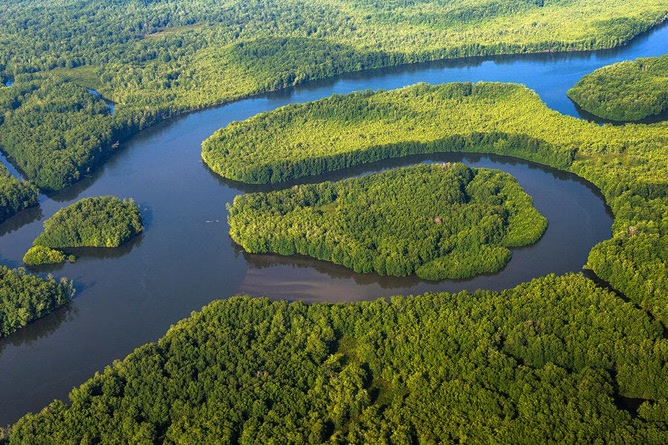
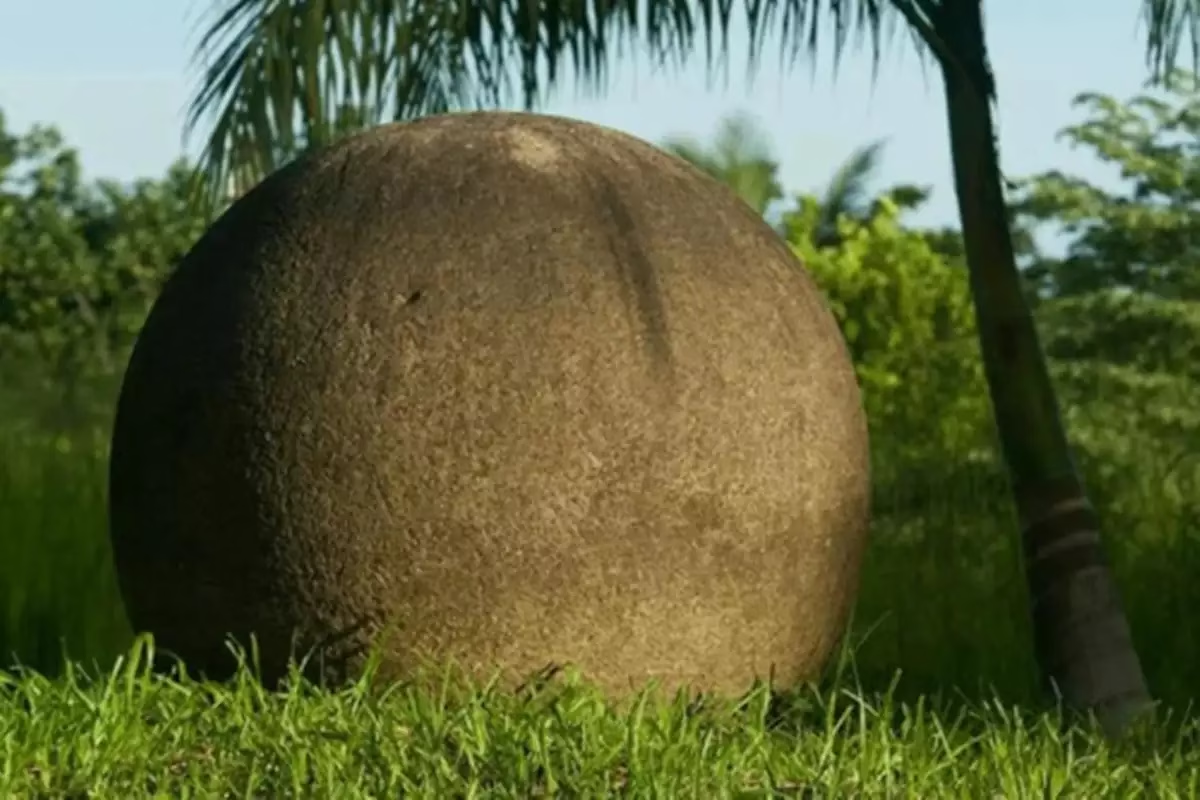
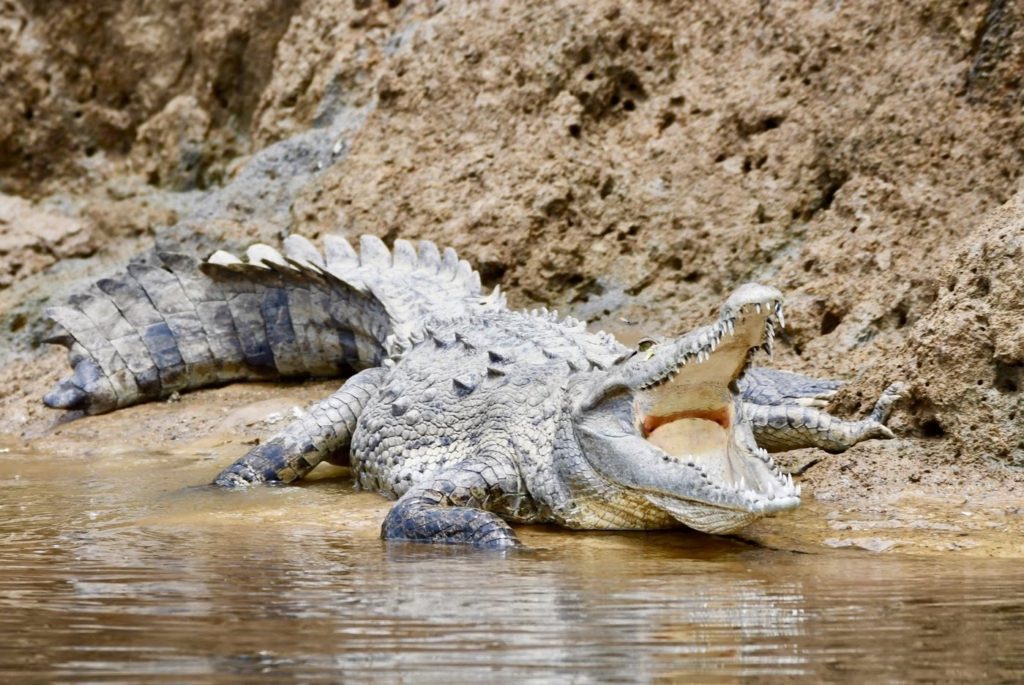
Drake Bay: The Best Diving in Costa Rica
Drake Bay is a remote place, ideal for disconnecting from humanity and connecting only with what surrounds you. This small, colorful town was named after Sir Francis Drake, who is believed to have visited the area in the 16th century.
How to get to Drake Bay?
Getting to Drake itself is an adventure that will take you through different experiences:
- Public Transportation: You can take a bus to Sierpe and from there take a boat directly to Drake Bay, a very scenic route through Costa Rica and the canals of the largest mangrove in Latin America. If you choose this option, remember that there are only 2 buses a day from San José to Sierpe, and this trip can take up to 7 hours. From Sierpe to Drake, there are 2 boats a day, which adds another hour of travel. The first boat leaves at 11:30 AM, and the second at 3:30 PM, so you must coordinate your times very well. Another option would be to take the bus to Palmar Norte and take a taxi to Sierpe. Remember that these collective boats leave from the Oleaje Sereno restaurant, and the price can vary between $15 and $20 per person.
- Own Vehicle: You can drive to Sierpe and take a small ferry that will help you cross the Sierpe River and put you back on the road. From there, you can drive to Agujitas, the main beach of Drake Bay. From Sierpe to Agujitas, it’s 110.5 km, so after crossing the river, it’s about 2 more hours of travel. You can avoid the boat option and travel directly to Rincón de Osa, where you’ll find the intersection to Drake Bay and Puerto Jiménez. This road, or at least the last stretch, is not paved, so it’s recommended to take this route with a 4×4 vehicle, especially in the rainy season. Currently, there are several bridges on the route that facilitate access during the dry season; if the vehicle is high enough, it could enter without problems.
- Flight: This is definitely my favorite option. In Costa Rica, there are several airlines like Sansa that provide daily flights to remote destinations, including Drake Bay. If you take a flight from San José, you can reach your destination in just 50 minutes and save a day of travel or driving. And domestic flights in Costa Rica are a tour in themselves, as you can enjoy our country from the heights, where you can recognize different natural monuments like the Sierpe mangroves or the famous Whale’s Tail of Uvita.
What to do in Drake Bay?
Drake Bay is a destination that cannot be missed on your list of visits in Costa Rica, as it’s the best access point to visit the iconic Caño Island. This site, in addition to having great visibility, is considered the second-best diving or snorkeling spot in the country, with the first place going to Cocos Island, although this destination is not as accessible.
Caño Island is a marine life sanctuary, and within its 7 dive sites, you can see different species like barracudas, reef fish like parrotfish, turtles, manta rays, dolphins, moray eels, mollusks, corals, and more.
This natural paradise also has a great archaeological history, as it’s said that in the past, our ancestors used it as a trading center, since remains of clay pots and other indigenous crafts have been found on the island.
Drake Bay has a variety of beaches to choose from, such as Agujitas Beach, Cocalito Beach, and San Josecito Beach. The Agujitas River is also ideal for exploring, bird watching, kayaking, or tubing. You can also take tours to Corcovado National Park. In fact, to visit the San Pedrillo station, access will only be through Drake Bay, and boat tours can also be taken to the Sirena station, the heart of Corcovado National Park.
Without a doubt, Drake Bay has an unmissable essence, and its remoteness and pristine nature make it a unique destination.
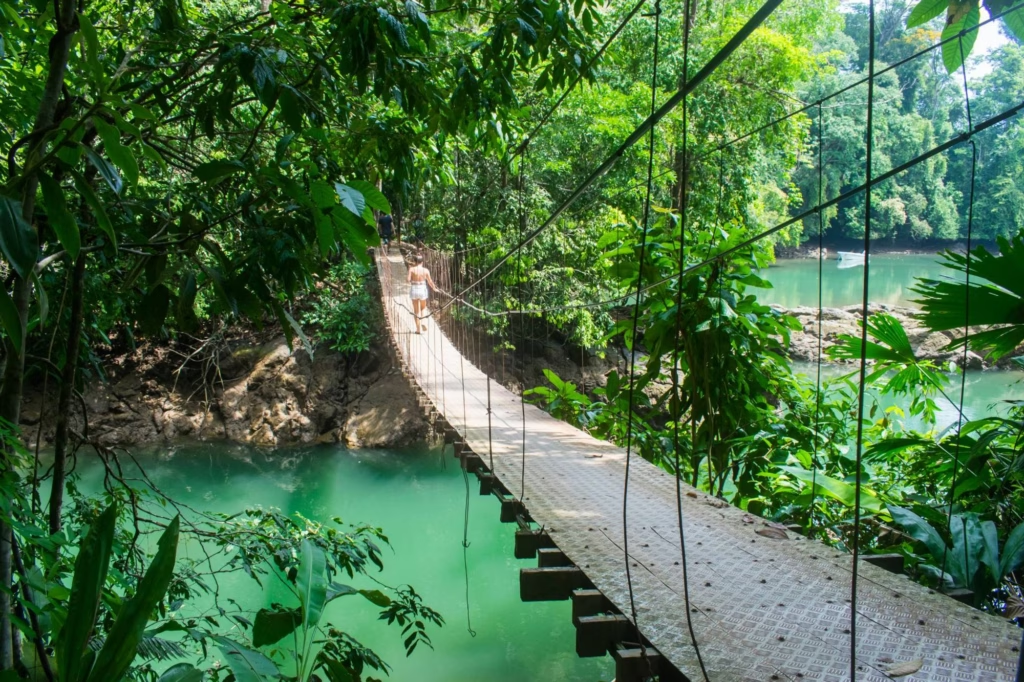
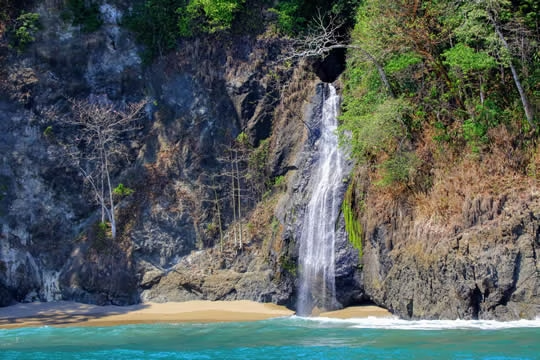
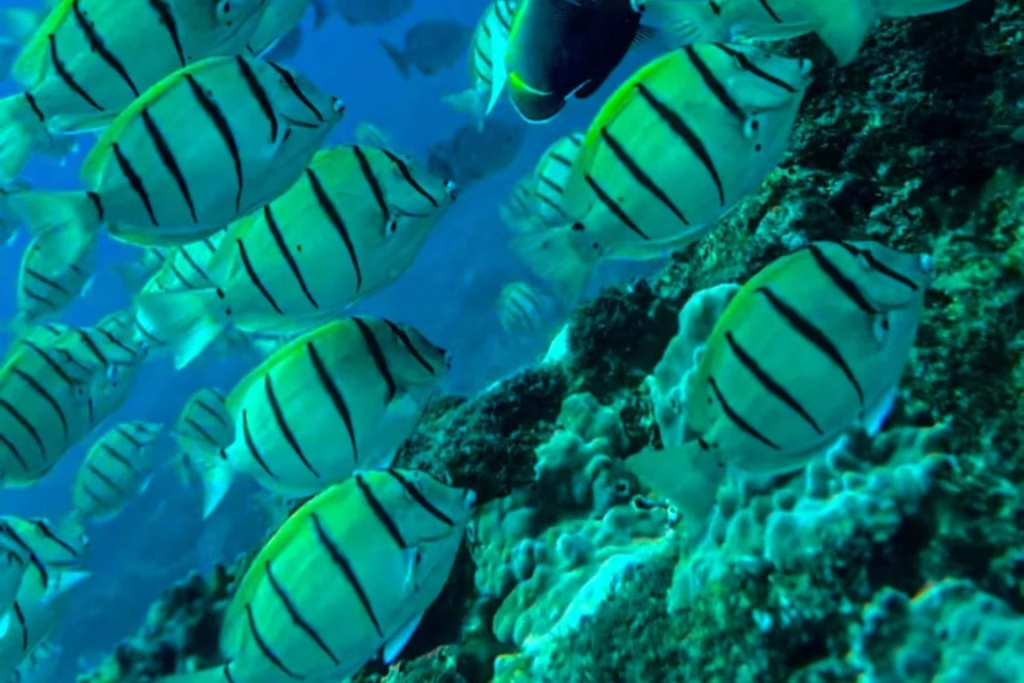
Puerto Jiménez: Entrance to Corcovado National Park
Puerto Jiménez is a canton located on the west coast of the Osa Peninsula, bathed by the calm and beautiful waters of the Golfo Dulce, one of the only four tropical fjords in the world. This destination offers us a privileged environment, as it also has the last remnant of tropical rainforest on the entire Central American Pacific coast.
Puerto Jiménez has a great history linked to gold and the conservation of natural resources. Currently, ecotourism is the main engine of the local economy.
The Golfo Dulce has one of the longest humpback whale watching seasons in the world, which occurs every year from July to December. However, in some years, they have been seen until January or February. The whale shark is also a resident of these waters.
How to get to Puerto Jiménez?
To get to this tropical paradise and the main demographic center of the Osa Peninsula, there are a variety of different options: Bus Service, Own Vehicle, Flight, or Boat.
Bus Service: If you are coming from San José, Perez Zeledon, Uvita, Dominical, Puerto Cortes, Palmar Sur, or Ciudad Neily, there is a bus company with direct service to Puerto Jiménez called Transportes Blanco Lobo. From San José, there is only one bus daily at noon.
Own Vehicle: The roads to Puerto Jiménez are fully paved and mostly in excellent condition. It takes 6 to 8 hours to drive from San José. In the dry season, they are totally scenic with sea views, beautiful sunsets, and sunrises. In the rainy season, they have their unique charm of the tropical rainforest. If you are going to drive on these roads, it is important to remember that you are driving within conservation areas, so you must be careful when driving as there may be animals on the road or a fallen tree. There are different car rental companies in Costa Rica such as Alamo, National, and Enterprise. This company provides assistance throughout the territory of the Osa Peninsula and Costa Rica.
Flight: Local flights are like teleportation. From San José, it takes 45 minutes to Puerto Jiménez, and incredibly, this is the rural destination with the most daily flights in the entire country. Sansa airline operates at least 5 daily flights to Puerto Jiménez, with affordable fares.
Boat: If you are in Golfito or nearby places, there is a cabotage service that connects Puerto Jiménez and Golfito. This service operates 4 times a day on both lines from Monday to Saturday, and on Sundays, it only offers 2 services per route.
What to do in Puerto Jiménez?
Definitely, if you are thinking of coming to Puerto Jiménez, the first thing is to reserve the dates for your Corcovado excursion. I personally recommend the 3-day, 2-night tour. However, there are countless options to visit this biodiversity jewel, and as you can imagine, it is a site with a certain exclusivity of tickets. Anyone can get them, but space is limited, so the sooner you book, the better, and it will give you more opportunities to choose a personalized experience that suits your physical abilities. If you want to see the options we have at Corcovado Explorers for you, you can visit the following link: Corcovado National Park Activities.
The Golfo Dulce is not far behind, one of the wonders of this territory and probably my favorite, a peaceful environment that transmits peace, home to two species of resident dolphins, manta rays, moray eels, mollusks, mangroves, and a lot of marine life. The Golfo Dulce is home to 21.5% of all marine species recorded on the Pacific coast of Costa Rica.
Activities such as kayaking in the mangroves, snorkeling, dolphin and turtle watching are an everyday thing since the Gulf has calm waters similar to a lagoon that creates mirrors, and you don’t recognize if you are in the sea or in the sky. In the humpback whale season, it is impressive to see these giants dancing in our waters, not to mention the nocturnal flashes that bioluminescence paints once the sun goes down.
Puerto Jiménez is a town full of surprises. It has more lodging, restaurants, services, and development than the other two destinations on the Osa Peninsula, where you can find a wide range of options that can suit your needs.
If you want to know more about Puerto Jiménez and the available activities, you can go to the following link: Puerto Jiménez.
Without a doubt, the Osa Peninsula is a place I could never stop talking about, and I am sure it will never stop surprising me. Our team of Explorers and I hope that this guide is useful for you and allows you to get a little closer to this paradise.
If you are looking for more information for your vacation in Costa Rica or the Osa Peninsula, you can check our blog where I or another explorer will share all the necessary information for your trip. And remember that if you have questions or want to contact our Corcovado Explorers team, you can write to our WhatsApp where you will receive personalized attention and you can book our tours.
Don’t forget to follow us on Instagram, YouTube, and TripAdvisor to see new content and offers.
See you in the next explorer blog, and always remember to go out and explore.
Al.
